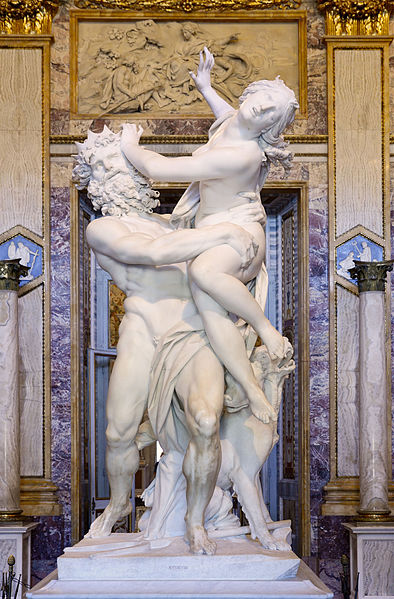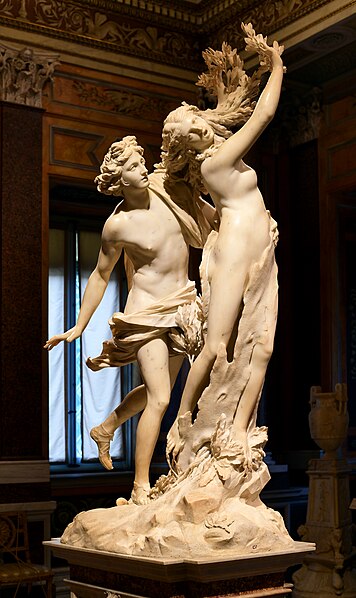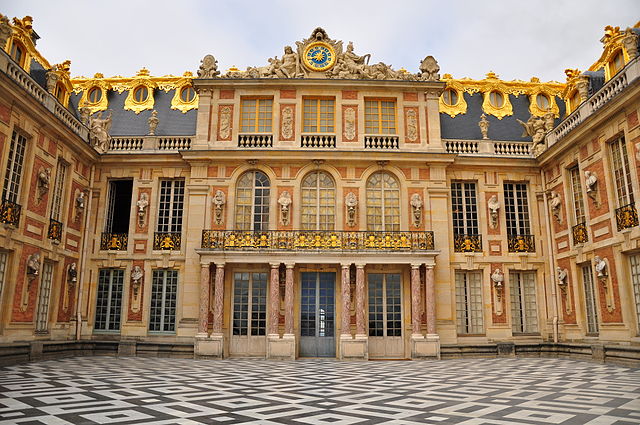Baroque sculpture is the sculpture associated with the Baroque style of the period between the early 17th and mid 18th centuries. In Baroque sculpture, groups of figures assumed new importance, and there was a dynamic movement and energy of human forms—they spiralled around an empty central vortex, or reached outwards into the surrounding space. Baroque sculpture often had multiple ideal viewing angles, and reflected a general continuation of the Renaissance move away from the relief to sculpture created in the round, and designed to be placed in the middle of a large space—elaborate fountains such as Gian Lorenzo Bernini‘s Fontana dei Quattro Fiumi, or those in the Gardens of Versailles were a Baroque speciality. The Baroque style was perfectly suited to sculpture, with Bernini the dominating figure of the age in works such as The Ecstasy of St Theresa (1647–1652). Much Baroque sculpture added extra-sculptural elements, for example, concealed lighting, or water fountains, or fused sculpture and architecture to create a transformative experience for the viewer. Artists saw themselves as in the classical tradition, but admired Hellenistic and later Roman sculpture, rather than that of the more "Classical" periods as they are seen today.

The Ecstasy of St Theresa (1647–1652) Gian Lorenzo Bernini
Rape of the Sabine Women by Giambologna (1581–1583), Piazza della Signoria, Florence
Rape of Proserpina (1621–1622) by Gian Lorenzo Bernini (Borghese Gallery)
Apollo and Daphne (1622–1625) by Gian Lorenzo Bernini (Borghese Gallery)
The Baroque or Baroquism is a Western style of architecture, music, dance, painting, sculpture, poetry, and other arts that flourished from the early 17th century until the 1750s. It followed Renaissance art and Mannerism and preceded the Rococo and Neoclassical styles. It was encouraged by the Catholic Church as a means to counter the simplicity and austerity of Protestant architecture, art, and music, though Lutheran Baroque art developed in parts of Europe as well.
Image: WLA metmuseum Venus and Adonis by Peter Paul Rubens
Image: Ecstasy of Saint Teresa September 2015 2a
Image: Cour de Marbre du Château de Versailles October 5, 2011
Pendant in the form of a siren, made of a baroque pearl (the torso) with enameled gold mounts set with rubies, probably circa 1860, in the Metropolitan Museum of Art (New York City, New York).








